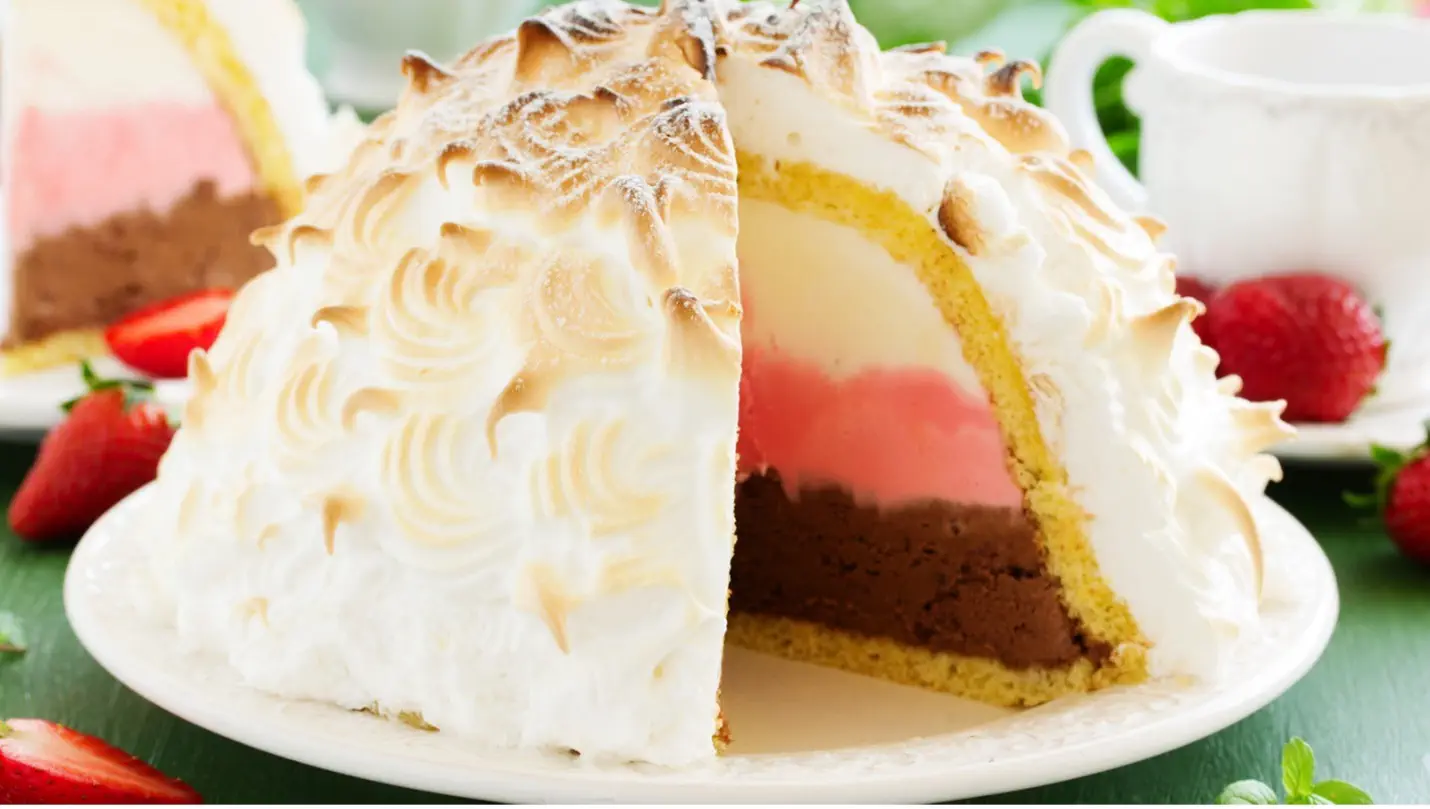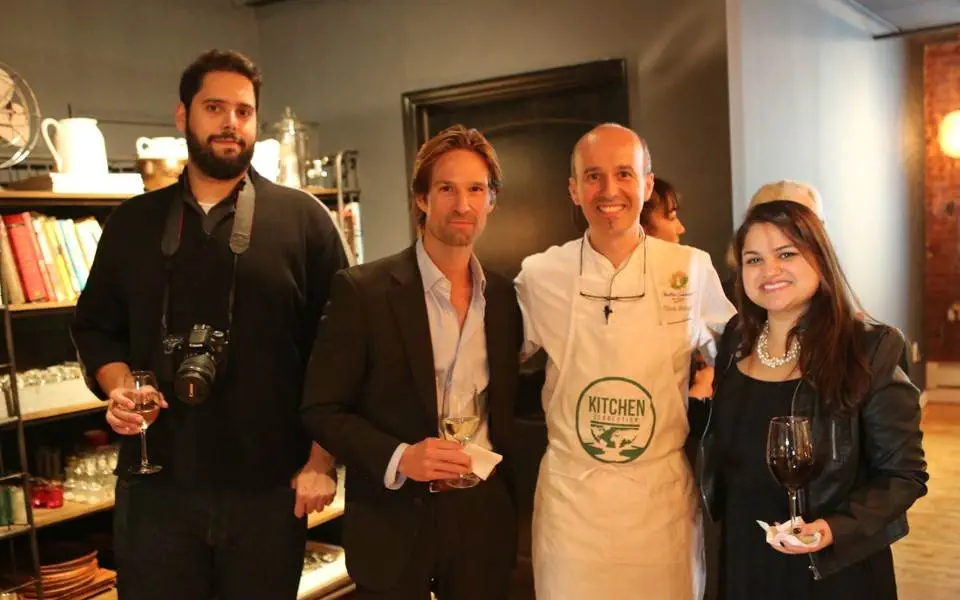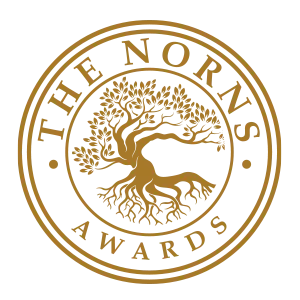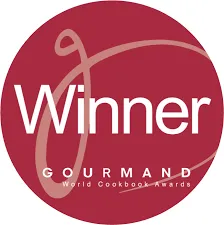See below for recipe
The History of Baked Alaska
On March 30, 1867, for a mere $7.2 million — about two cents per acre — the U.S. bought land from Russia that would eventually make Alaska its 49th state, gaining a delicious fringe benefit in the process: Baked Alaska.
No, this igloo-shaped dessert — cake and ice cream shrouded in toasted meringue — didn’t come from the icy north, but its name was inspired by the land deal. In fact, the treat’s true roots date back to the turn of the 18th century, when American-born scientist Sir Benjamin Thompson (aka Count Rumford, a title he gained for his loyalty to the crown during the American Revolution) — whose inventions included a kitchen range and a double boiler — made a discovery about egg whites.
Rumford realized that the air bubbles inside whipped egg whites made meringue a great insulator. “That’s really why the Baked Alaska works,” says Libby “O’Connell, the History Channel’s chief historian and author of The American Plate.”The meringue insulates the ice cream from heat.”
By the 1830s, this culinary revelation had inspired French chefs to create a dessert called the “Omelette Norwegge.” This predecessor of Baked Alaska consisted of layers of cake and ice cream covered in meringue, then broiled. The French named this elaborate treat in reference to its own frigid territory to the north — Norway.
So how did the “Omelette Norwegge” become embroiled with the Alaska purchase?
Charles Ranhofer, an expat Parisian pastry chef at the legendary Delmonico’s restaurant in New York City, was renowned for dishes doubling as cultural commentary — Peach Pudding à la [President Grover] Cleveland or Sarah Potatoes after actress Sarah Bernhardt, for example. In 1867, Ranhofer made a quip through his pastry that the world would never forget.
Secretary of State William’s Seward’s acquisition of a faraway tundra drew no shortage of criticism and ridicule. Ranhofer, who likely encountered the “Omelette Norwegge” in his French training, jumped on the bandwagon with a dessert he dubbed “Alaska, Florida” — a reference to the temperature contrast between ice cream and toasted meringue.
The original version consisted of banana ice cream, walnut spice cake and meringue torched to a golden brown. While making Baked Alaska today is much easier because of modern conveniences such as electric mixers and blowtorches, it was once an incredibly opulent dish, requiring a full kitchen staff and a significant amount of time. And it was also alluring, because it contained expensive bananas from Central America.
O’Connell says, “It’s one of the best exemplars of the Gilded Age in American history.” The price tag reflected its grandeur — the cost of the dessert then would equal about $40 today. And Delmonico’s, established in 1837 and still in business today, was a who’s who of the dining scene, drawing personalities like the Rockefellers and Charles Dickens.
According to Billy Oliva, Delmonico’s current executive chef, the dessert’s name was coined in the 1880s when English journalist George Sala visited the restaurant and remarked: “The ‘Alaska’ is a baked ice … the nucleus or core of the entremets is an ice cream … surrounded by an envelope of carefully whipped cream, which, just before the dainty dish is served, is popped into the oven or brought under the scorching influence of a red hot salamander.”
Michael Krondl, an associate editor of the Oxford Companion to Sugarand Sweets, tells a slightly different tale. He says the French “Omelette Norwegge” didn’t appear until the 1890s, and evidence for Ranhofer’s debut of the “Alaska, Florida” is too slim to credit him with its creation.
According to Krondl, the journalist who visited Delmonico’s was Charles Augustus Sala — though records account for just one English journalist in this era with the surname Sala: George Augustus Henry Sala which is in line with Delmonico’s story. “Charles Augustus Sala described eating an ‘Alaska’ at Delmonico’s with more enthusiasm than accuracy,” states the Oxford Companion to Sugar and Sweets, “He mistook the meringue for whipped cream.”
Conflicting accounts aside, Ranhofer definitely featured the dessert under the name “Alaska, Florida” in his 1894 cookbook, The Epicurean. And today, Delmonico’s continues to serve it at a much more reasonable price — $13 — and in more or less the same fashion as the original: walnut sponge cake layered with apricot compote and banana gelato, covered with torched meringue.
Baked Alaska – Recipe
Adapted by John Coletta
Yields 12 servings
Ingredients
- nonstick cooking spray
- 80g sugar, granulated
- 3 large egg yolks
- 5 ml vanilla, pure extract
- 84 g chocolate, bittersweet, melted, tempered
- 3 large egg whites, room temp
- 3 g salt, sea, fine grind pinch
- 2750 ml ice cream, chocolate
- 1750 ml ice cream, vanilla
- 600 ml ice cream, strawberry
- swiss meringue
- kitchen blowtorch
Instructions
- Line a 22 centimeter round cake pan with parchment paper, and spray with cooking spray.
- Combine 40g sugar and the egg yolks in bowl of an electric mixer fitted with the whisk attachment; whisk on medium speed until pale yellow and thick, about 15 minutes. Add vanilla, and fold in melted chocolate just to combine.
- Combine egg white and a pinch of salt in bowl of electric mixer fitted with the whisk attachment; whip on medium speed until frothy. Add remaining 40g sugar; beat until stiff. Fold egg whites into the chocolate mixture.
- Carefully pour batter into prepared cake pan. Bake until cake is set and top is dull, about 20 minutes. Remove from oven and let cool on a wire rack.
- Spray a 3-liter bowl with a 22 centimeter diameter with cooking spray; line with plastic wrap. Pack base of bowl and up the sides with chocolate ice cream; cover with plastic and press with your hands to make an even, smooth layer. Transfer to freezer and freeze until firm, about 2 hours.
- Remove plastic wrap and form a layer of vanilla ice cream on top of the chocolate; cover with plastic wrap and press with your hands to make an even, smooth layer. Transfer to freezer and freeze until firm, about 2 hours.
- Remove plastic wrap and form a layer of strawberry ice cream on top of vanilla, leaving a small well in the center of the coffee layer. Transfer to freezer and freeze until firm, at least 2 hours and up to overnight.
- Place cake on a parchment-paper-lined baking sheet. Remove ice cream from freezer and remove plastic wrap; invert bowl over cake. Keep ice cream covered with plastic wrap, and return ice cream cake to freezer.
- Fill a pastry bag, fitted with a large star tip, with meringue; pipe onto ice cream in a decorative fashion, or spoon meringue over ice cream and swirl with a rubber spatula. If ice cream starts to soften, return cake to freezer for 15 minutes.
- Using a kitchen torch, heat meringue until it just starts to brown, transfer to an appropriate serving platter, and serve immediately
For more recipes, visit www.worldchefs.org/news.













